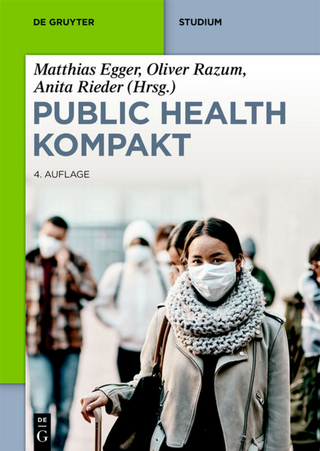
Disease Ecology
Oxford University Press (Verlag)
978-0-19-856707-3 (ISBN)
Dr Sharon K. Collinge's research is based primarily in grassland ecosystems of the American west, integrating theories and methods of ecology and conservation to examine how changing landscapes affect interactions among native species. Her research centres on how habitat loss and fragmentation influence species interactions, particularly those involving disease dynamics in grassland mammals. Dr Collinge received her PhD from Harvard University in landscape ecology in 1995 and has been on the faculty of the University of Colorado-Boulder since 1998. Dr Chris Ray studies the demographic and genetic dynamics of spatially structured populations. Her research includes the development and application of predictive models, and the use of long-term field studies to test theory in population biology. Dr Ray received her PhD from the University of California-Davis in population biology in 1997, has worked on threatened and endangered species management projects for the US Fish and Wildlife Service, and has been a research associate at the University of Colorado-Boulder since 2001.
1. Community ecology meets epidemiology ; 2. Extending the principles of community ecology to address the epidemiology of host-pathogen systems ; 3. Community ecology meets epidemiology: the case of Lyme disease ; 4. Microbial community ecology of tick-borne human pathogens ; 5. Disease dynamics in plant communities ; 6. Host selection and its role in transmission of arboviral encephalitides ; 7. Freshwater community interactions and malaria ; 8. The community ecology of Vibrio cholerae ; 9. Food webs and parasites in a salt marsh ecosystem ; 10. Shifting roles of abiotic and biotic regulation of a multi-host parasite following disturbance ; 11. Urbanization and disease in amphibians ; 12. Spatial-temporal dynamics of rabies in ecological communities ; 13. The emergence of Nipah and Hendra virus: pathogen dynamics across a wildlife-livestock-human continuum ; 14. Potential effects of a keystone species on the dynamics of sylvatic plague
| Erscheint lt. Verlag | 1.2.2006 |
|---|---|
| Zusatzinfo | 1 colour plate, 64 figures, plus numerous boxes and tables |
| Verlagsort | Oxford |
| Sprache | englisch |
| Maße | 195 x 254 mm |
| Gewicht | 628 g |
| Themenwelt | Studium ► Querschnittsbereiche ► Epidemiologie / Med. Biometrie |
| Naturwissenschaften ► Biologie ► Ökologie / Naturschutz | |
| Naturwissenschaften ► Biologie ► Zoologie | |
| ISBN-10 | 0-19-856707-3 / 0198567073 |
| ISBN-13 | 978-0-19-856707-3 / 9780198567073 |
| Zustand | Neuware |
| Haben Sie eine Frage zum Produkt? |
aus dem Bereich


